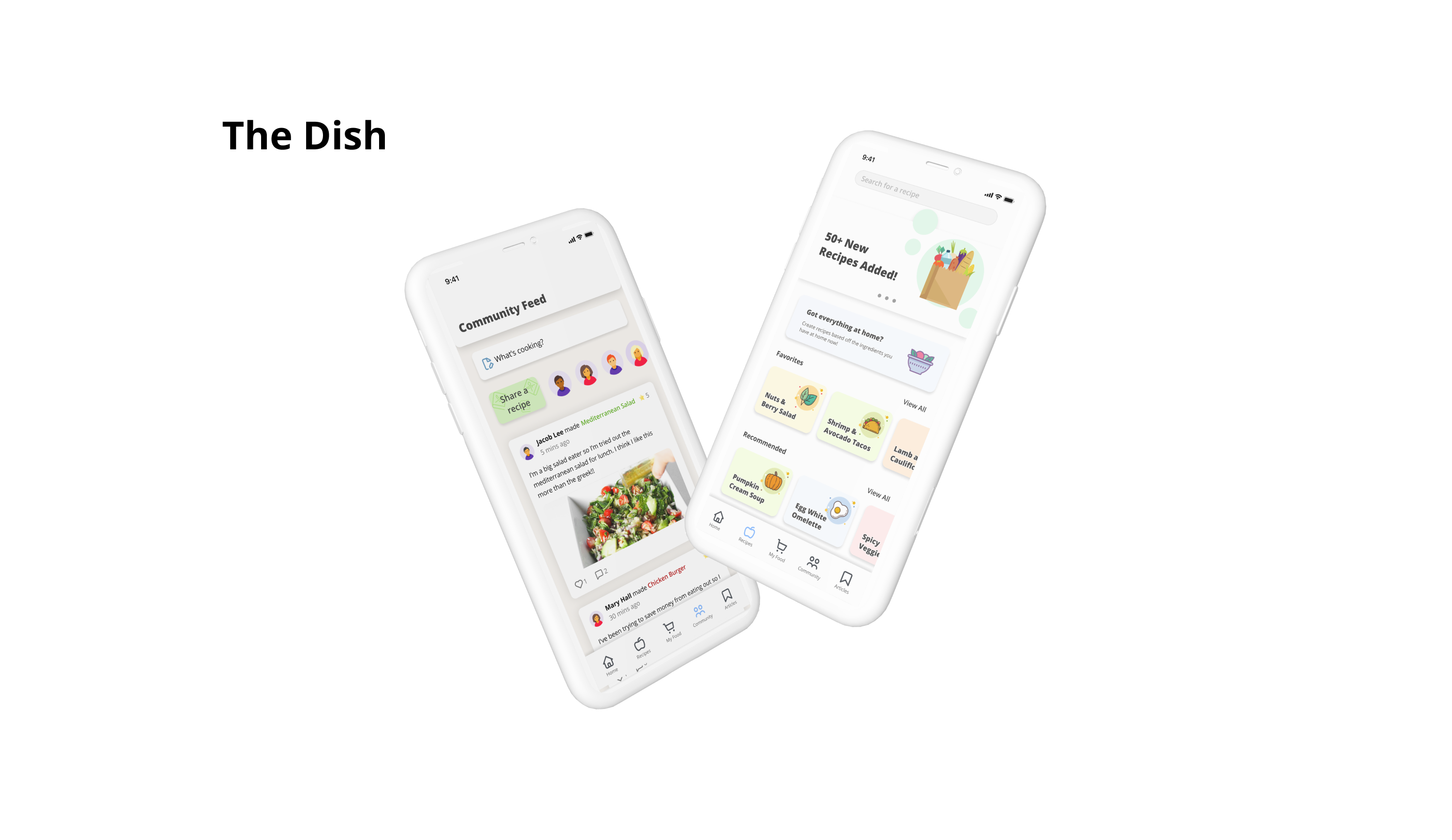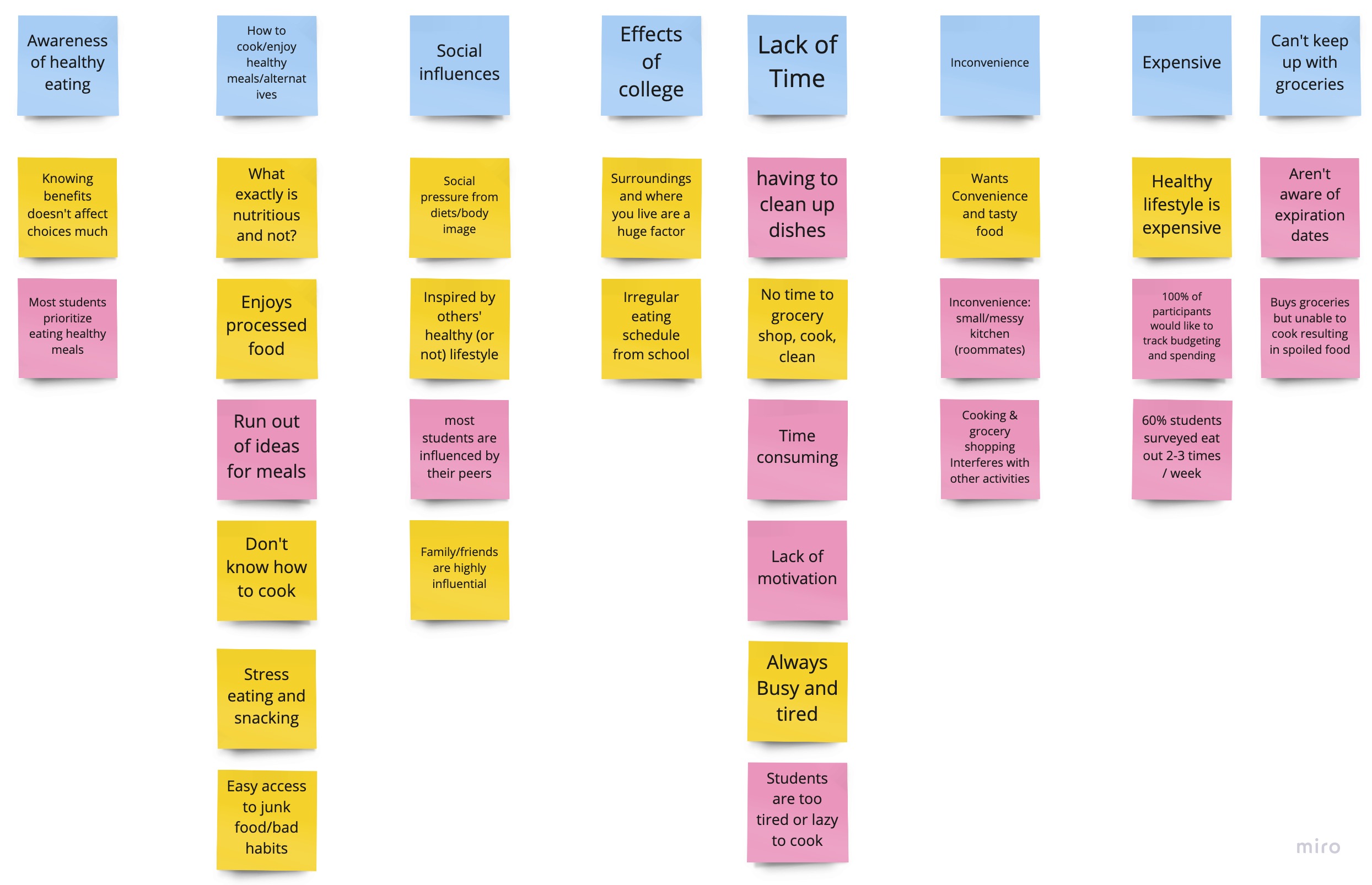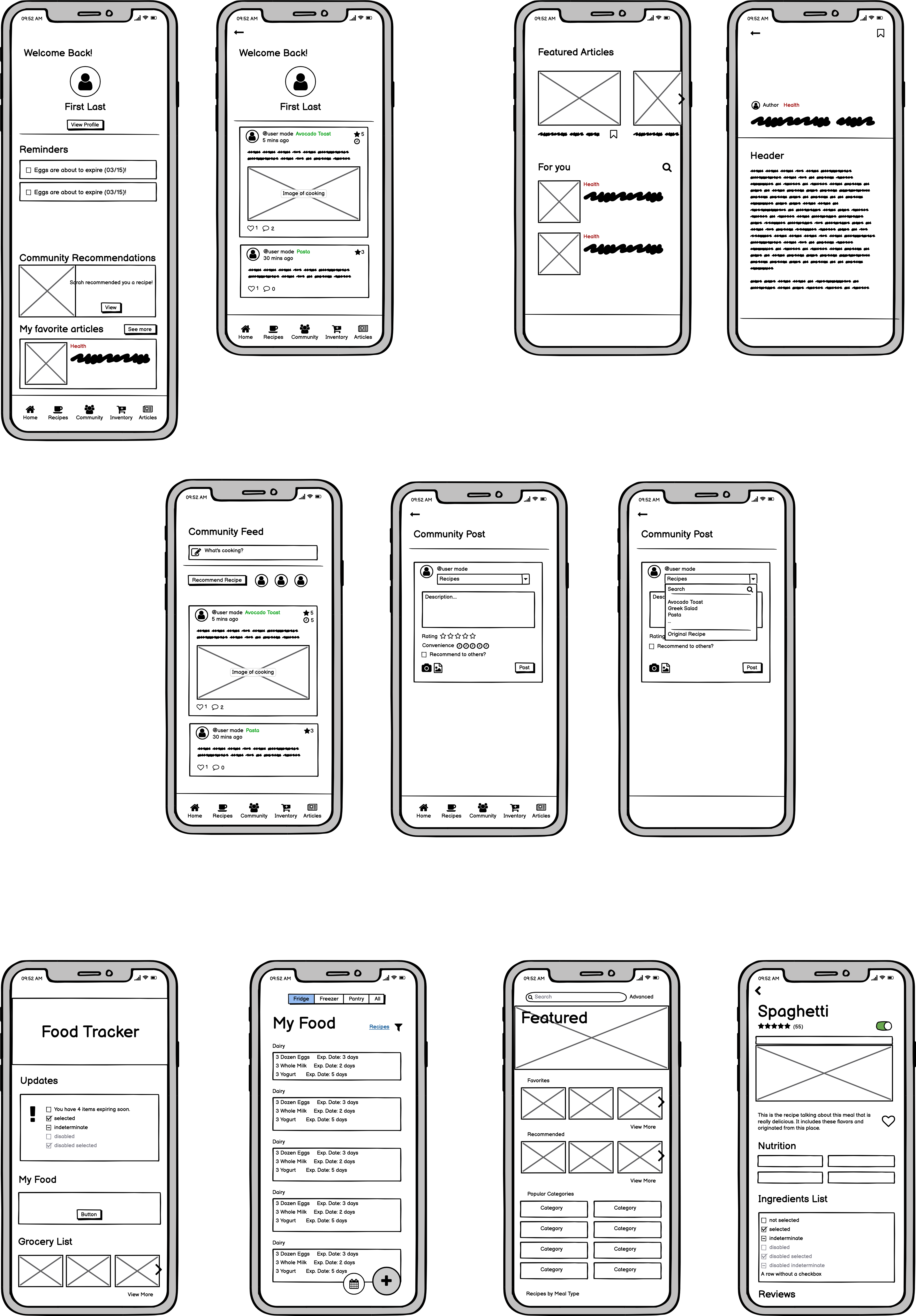

Students have a fair knowledge of
nutritional requirements for health; however, food choices they
make are not necessarily healthy. Convenience and taste of food were priority. There are plenty
of outside factors that can contribute to students preferring to make non-healthy eating
choices, as well as being influenced on a social level and their physical environment.
Catalyst 2021, a 36 hour UI/UX Designation, my partner and I
received honorable mentions in
the Health & Wellness Track with our project, "The Dish"!
View it here: https://devpost.com/software/the-dish
R E S P O N S I B I L I T I E S
UX Research,
UX & UI Design,
Visual Design
T I M E L I N E
March 26 - 28, 2020
Team of two UX designers
Due to the drastic transition to an independent lifestyle, students may quickly fall under the trap of developing unhealthy eating habits. It’s become increasingly common for students to prioritize academic or work responsibilities over health, and it’s not necessarily because they aren’t aware of the consequences.
We narrowed our search into three focuses:
1. How they feel about cooking homemade meals
2. Priorities when it comes to eating or eating habits
3. Obstacles with home cooked meals
The first things we did was research. Emily read paper publications on health and eating habits of college students.
Time constraints, unhealthy snacking, convenience high-calorie food, stress, high prices of healthy food, and easy access to junk food
Individual (intrapersonal), social (interpersonal), university environment (community settings), and students' life factors as influences affecting eating habits
We created a user survey and conducted 15 interviews among college students from both University
of Florida and University of Maryland.
Key takeaways
Pain points are significant! And it was important to fully understand our users challenges and what Passionfruit can do to help
Using Miro, Emily and I wrote down every response taken from the survey and put them into categories. The 5 main groups we discovered were: Awareness of healthy eating, social influences, lack of time, inconvenience, and cost.

Studnets have a fair knowledge of nutritional requirements for health; however, food choices they make are not necessarily healthy. Convenience and taste of food are priority. Analysis from the affinity diagram shows that the app should include:
Pain points are significant! And it was important to fully understand our users challenges and what Passionfruit can do to help

Emily and I chose icons from icons8 that give off a light and welcoming feel. Our target was college students who want to change their eating habits, so we wanted to pull inspiration from Instagram or Facebook with the light theme.

Product overview and navigation
Although it was a tiring weekend, I thought it was actually really fun. Emily presented the
idea and I thought that it may be really helpful to college students transitioning from
high school or just trying to become healthy.
Communication is important!
I believe what made our project so successful was Emily and I's communication. After every
task, we often updated eachother and made sure we were on the same page. We did not have a
lot of misunderstandings - even if we did it was clarified quickly.
Determine the value of the app
The part that took up most of the time was determining what should and should not be in our
app. From our research and surveys, we found many problems and lots of possible solutions.
We had to narrow down to the most important and what really mattered for our target users.
Test!
Unfortunately because there was a limit in time, we could not conduct usability tests as we
had hoped. If we conducted some testing, we would know what works and does not work in terms
of UI design and usability.
Emily and I would love to expand this project in the future and conduct tests to our target users!
View next project →